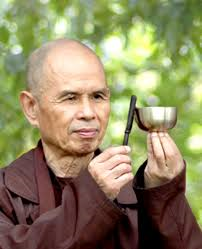
In this new age of COVID-19 lockdowns, and hunkered-down breathing in our homes, whipping off the face masks to breathe – in natural open air environments, or in a healthy indoor setting, can be just the antidote to despair and pandemic fatigue many of us are enduring at this time.
Now I’m not a yogi by any stretch (sorry..) of the imagination, but I was inspired to attend a class recently at our local yoga studio. I’m glad I did. It reminded me to breathe—to breathe that is, in a more centered, conscious way.
As the natural flow of my breath synced with the movements we were guided in, I was reminded of the sacred nature of breath itself…and I gave thanks.
Prana
The Sanskrit word Prana (prāṇa – प्राण) literally means the life-force energy or “breath” of the universe that infuses all living matter. Other Eastern traditions call it chi or qui. As energy, it vitalizes and animates the whole created order, right down to the cellular and molecular level. As life, or life-force, prana is what harmonizes our health and well-being. According to Paramhansa Yogananda, it does this at the level of the subtle or astral body which underlies our physical body. Acupuncture or Ayruveda healing techniques work at this level to unblock ruptures in this life-force prana. And lastly, when we take a physical breath, there is a corresponding movement of prana up and down the astral or subtle spine—an awareness that influences various forms of yogic meditation.
Ruah
In the Judaeo-Christian tradition, the ancient Hebrew word “Ruah” literally means “Breath” or “Spirit” or “Wind.” The very utterance of this sacred word for God “Ruach…” was that of a breathy, guttural sound invoking and evoking the Holy One..
Both the Old and New Testaments of the Judaeo-Christian Scriptures are littered with references to the sacred, life-giving energy of breath: In Genesis 1:2 it is the very Spirit of God that hovers over the waters giving life to all creation; Job 33:4 reads “The Spirit [Ruach] of God has made me: the breath of the Almighty gives me life.” and in the New Testament in a post resurrection “encounter” with the Christ, we read “He breathed on them and said ‘Receive the Holy Spirit’” (John 20:22)
Think of the words sharing the same root as Spirit (SPIR): inspire (inspiration), expire, respire (respirator).. Spirit, God and Breath are inextricably recognized and reverenced as one.
Peace Is Every Breath

In his book, Peace Is Every Breath: A Practice for Our Busy Lives, the much-loved Buddhist teacher, Thich Nhat Hahn offers a series of minduflness meditations based on ordinary, everyday living. Most especially, he reflects on the healing, centering power of breath. He suggests accompanying our in and out breaths with a mantra. For example: “I have arrived, I am home” (in breath), “in the here, in the now” (out breath), “I am solid, I am free” (in breath), “In the ultimate I dwell” (out breath).
With all the moves I’ve made in my life, I’ve often returned to this centering mantra to remind myself of my at-homeness and at-one-ment in the here and now, in the present moment. That my true identity and home transcend all physical locations and social perceptions of who I am.
Spirit of Gratitude
When I think of the many industrial cities of developing countries where residents often have to don masks to protect themselves from toxic air pollution; or when I meet folks at the grocery store with their oxygen tank in tow.. I am reminded of the blessing it is in my life to freely breathe oxygenated air filled with life-force divine energy to animate every cell of my body and being..
And I give thanks to the plankton in our streams and oceans, and to the rain forests and woodlands that generate the oxygen we breathe for survival—even if we are killing them off through human greed, pollution and consumption.
But hey! That’s a topic for another day. Namaste.

